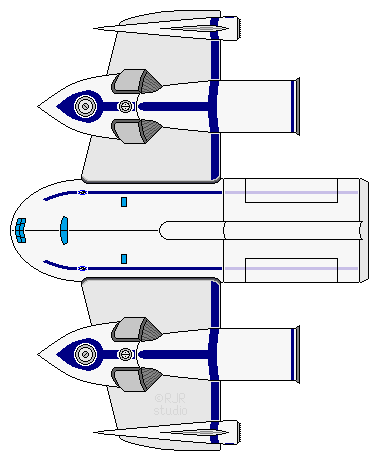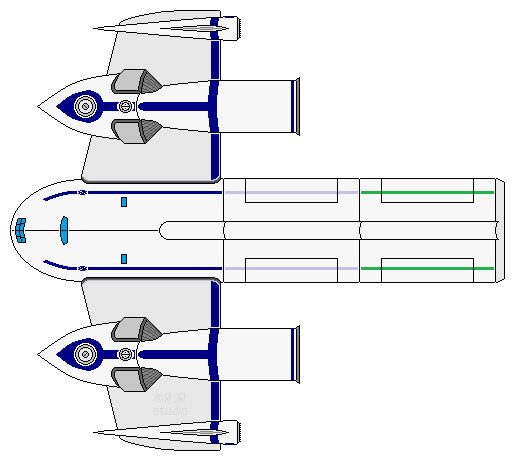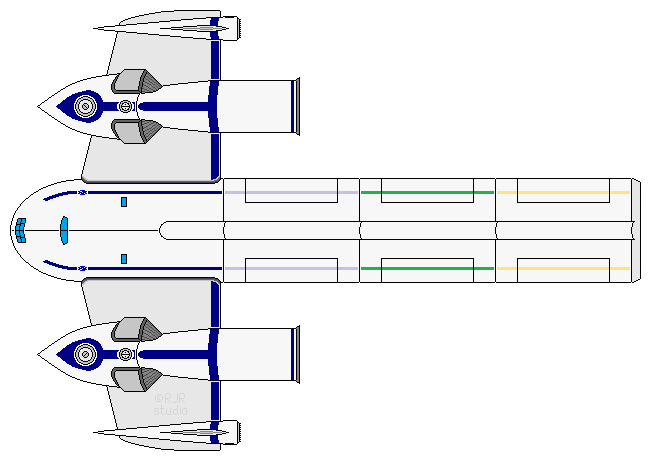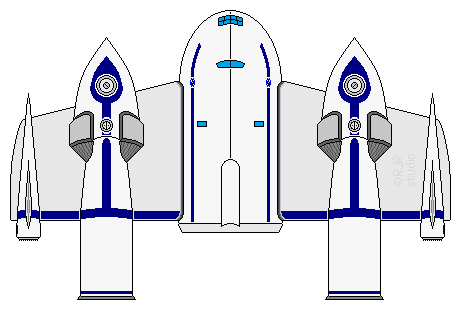
HS: 3 HP: 15 Powerplant: 2 class-A Atomic, Ion, or Chemical Drives
ADF: 1 or 4 MR: 4 DCR: 29 Crew: up to 8
Armament: N/A (optional Pod Laser Turret* at no penalty)
Defenses: N/A (RH available at no penalty)
Communication/Detection: SubSpace Radio, VideoCom, Radar, Intercom Network
Misc Equipment: N/A
Base Computer (Lv-2, 22fp, 8SP)
Alarm (2), Commerce (1), Computer Lockout (3), Damage Control (2), Industry (1), Life Support (1, capacity:8), Maintenance (2)
System Ships add --- Analysis (2) & Astrogation (2), Drive, Chemical (1) @ + 11fp & Lv-3/20SP
Star Ships add --- Analysis (4) & Astrogation (4), Drive, Ion (3) @ +44fp & Lv-3/20SP
or Drive, Atomic (4) @ +64fp $ Lv-4/100SP
Laser Battery (1) @ +4fp for adding the turret
Cargo Capacity: 3
Crew Accommodations: Captain’s Suite (double occupancy)
3 convertible single/double bunk cabins
Passenger Accommodations: N/A
Ship's Vehicles: N/A
*Pod Laser Turret is a short-ranged energy weapon based on the Laser Pod system (range: 40,000km, 1d10 damage)
Deck Plans
Scale: 1 square = 1 meter
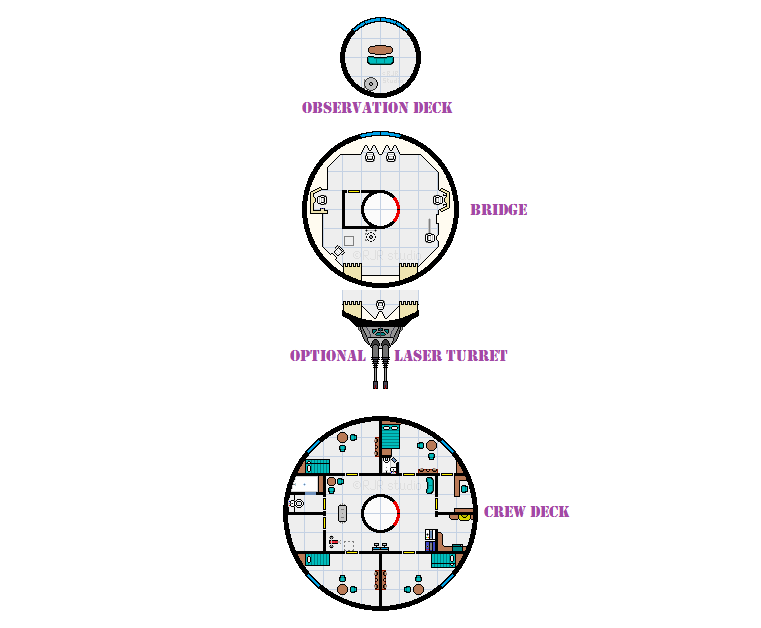
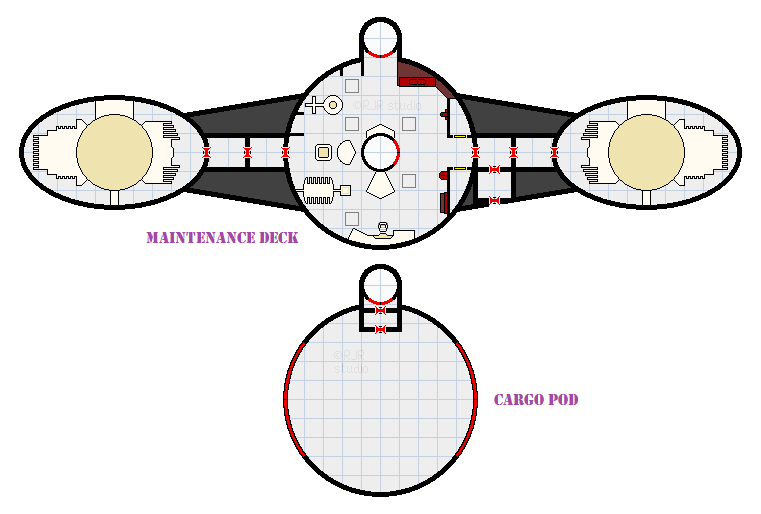
The Observation Dome is a small retreat deck featuring a sofa, coffee table, and a minimal bar with an entertainment center.
The Bridge level contains all the operational stations for the ship. The helm is centered at the dorsal position with captain/pilot and co-pilot positions, an engineer’s station is to port (right side of the map) and the astrogator station is adjacent to starboard (left on map). All three stations have a computer panel. A Computer Operator station is to starboard/ventral and a comms & sensor position is situated at port/ventral. The mainframe computer is nestled under the deck on the ventral side, accessible via the floor panel that leads to a maintenance shaft running all the way down to another panel in the ceiling of the Crew Deck.
The Crew Deck is a larger area with four cabins and a common area with galley and entertainment. The double occupancy Captain’s Suite complete with fresher is at dorsal/port, although it is typically single occupancy barring any “special” crew relations the captain may have. Adjacent to the suite is the Captain’s office. Three more convertible cabins encircle the circumference, each featuring one or two bunks depending upon crew size. A common fresher is centered at starboard, adjacent to a storage area. The galley is adjacent to the Captain’s office, and the rec/lounge area takes up the center.
The Maintenance Deck is the lowest deck on the ship and features monitoring equipment for the drives at dorsal/starboard, accessways to the engines themselves, life support equipment to starboard, a recharging station for robots & power packs adjacent to the elevator, a tool & machine shop to port (the tool rack has the equivalent of a TechKit, RobComKit, and Engineer’s Toolbox). A generator & power relay station are positioned to ventral/port. Floor panels can be removed to access equipment descending further into the hull. Airlocks and decontamination stations are situated in each “wing” along with a ventral outer hull airlock in the port side.
Up to three one-unit capacity Cargo Pods can be affixed to the stern, each clamps on to the prior pod with the first pod clamped to the aft of the freighter hull. Exterior elevator extensions allow for access to each pod and feature an airlock when accessing the interior from the elevator. Unlike Standardized Containers, pods are not as common; with the exception being for system ships pods get recycled at each end of a local route since they remain in-system at all times. Otherwise, a TT-300 starship will tend to service neighboring systems to a “home port” and in some cases, run a continuous “circuit route” such as Prenglar and the three Yazirian systems (not including Scree Fron). As such, detached pods will be encountered by rolling doubles on 2d10.
While the TT-300LF design suggests it is streamlined, it does not make planetary landings as it lacks any landing gear or the ability to mount a landing module. Even if such equipment were made available, it would not be capable of atmospheric use with cargo pods attached.
